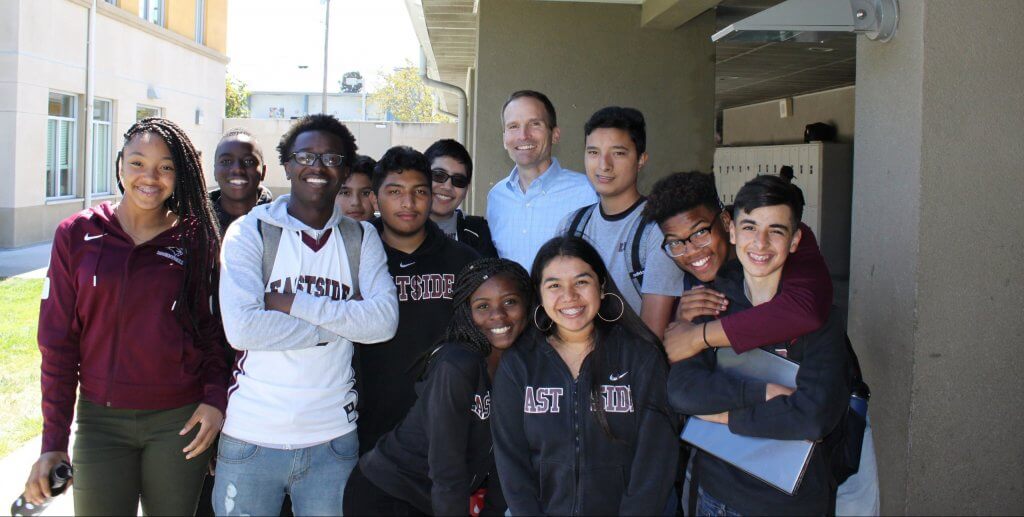Pay-It-Forward Scaling: A Powerful New Approach Exemplified by CAMFED
What if we assessed nonprofits not only by their impact on beneficiaries, but also by the extent to which those beneficiaries arise in subsequent years to become future donors and leaders, multiplying the impact of the organization through their direct engagement?
The CAMFED multiplier effect: To increase your impact, first look within
Nonprofits today are under increasing pressure both to find new sources of donations and to expand their pipeline of future leaders. The response of many well-intentioned nonprofit leaders has been to relentlessly reach outward by seeking new potential donors and new sources of talent to fill leadership roles. Unfortunately, such an approach can bring significant opportunity costs.
When it comes to donations, for instance, it costs significantly more to identify, develop, and acquire a new donor than to cultivate one who is already familiar with the organization. That’s why American colleges and universities have long cultivated alumni as top donors, and with great success. This approach, however, remains rare among social service organizations and nonprofits that focus, for example, on primary or secondary education for underserved students or public health. Likewise, it is costly and time-consuming to fill a nonprofit’s leadership pipeline by recruiting and training people who are not deeply familiar with the organization. To effectively address these issues, we can all learn much from the extraordinary nonprofit CAMFED, (Campaign for Female Education). Founded by Ann Cotton OBE in 1993, CAMFED is an international organization that tackles poverty and inequality by investing in girls and women in poor rural communities of sub-Saharan Africa. Its innovative education programs have led to improved learning environments for more than five million children in Ghana, Malawi, Tanzania, Zambia, and Zimbabwe. In 2018 alone, nearly three million students benefited from an improved learning environment; 52,713 received support to go to primary school; and 64,767 were aided with secondary school bursaries
Each CAMFED Association member, on average, supports another three girls to go to school. Hawa, pictured here, was the first girl in her village in rural Ghana to complete secondary school
Photo: ElizaPowell/CAMFED
I had the opportunity to sit down with CAMFED’s excellent CEO, Lucy Lake, on my recent trip to London. We discussed many of CAMFED’s achievements, but of particular interest to me was its alumnae association, the CAMFED Association, known to its members as CAMA.
Fostering pay-it-forward scaling and leadership by unleashing a powerful alumni network
The CAMFED Association was created in 1998 by the first 400 women who completed secondary school with CAMFED’s support. These women looked at the powerful alumni networks of international institutions like American universities and decided to build their own. They wanted to stay connected, of course, and to maintain their friendships. But, more importantly, they hoped to mentor and support girls who were following in their footsteps. CAMA members thus joined together to support CAMFED in its mission of supporting marginalized young women to go to school, succeed, and lead. As Lake explained:
In partnership with donors and rural communities, and through the leadership of the CAMFED Association, we are offering training, technology, business loans, and mentoring support to young women at the critical time when they leave secondary school and may be under pressure to marry young, or to leave their rural communities for jobs in towns or cities, where they are extremely vulnerable. Our investment in the Association’s membership is paying huge dividends, as young women are extending partnerships, developing innovative programs, galvanizing change in their communities, and leading the pan-African movement in support of girls’ education.
The CAMFED Association now has more than 150,000 members, which makes it the largest network of its kind in Africa. Its members are determined to “plow back” into their communities the benefits they have received from their education. Lake elaborated:
People often ask us, “How do you get your beneficiaries to get involved and give back?” And my response is that we don’t! We don’t “get them to…” it is entirely self-generated. It emerges out of the empowerment that these young women experience. They feel that they are part of the solution where they experience change, see the change, and can be part of that change. They tap into the energy and possibility. Young women in the CAMFED Association find power in their voice and power in their agency.
This energy and sense of possibility then diminishes the belief that to move up, one must move out, generally to a big city, and not look back. “That sense is supplanted by CAMFED,” said Lake. “It turns into, ‘I might have moved away but I am still so proud of where I come from and I will give back.’ Underneath the momentum is the notion of the social movement that CAMFED has worked to foster.” Association members also go on to play major roles in CAMFED itself. Indeed, much of the organization’s executive leadership is comprised of alumnae, including CAMFED Executive Director-Africa, Angeline Murimirwa; CAMFED National Director, Zimbabwe, Faith Nkala; and Executive Advisor, CAMFED Association, Fiona Mavhinga.
In addition to providing a platform by which girls who receive CAMFED-supported scholarships can emerge to play an important role in what Lake calls “the social movement oriented around female empowerment,” CAMFED has also put in place concrete mechanisms to facilitate the engagement of its beneficiaries and encourage their involvement in the CAMFED Association. This involvement often leads beneficiaries to provide financial support for the next generation. Indeed, on average, a girl who has received a CAMFED bursary goes on to support three more girls. (And anecdotal reporting tells of alumnae supporting as many as 15 girls in their local communities.) CAMFED is also rigorous when it comes to tracking bursary recipients. As Lake told me:
There is financial transparency so that our alumnae donors can see what their donation achieves; how many girls they are supporting, who they are, what they’ve received, the success of these scholarship recipients, attendance and learning results, school completion and further education, and future employment. In addition, CAMFED has leveraged technology: alumnae can see information about the girls they have supported on their phones driven by a new underpinning Salesforce database system.
Fuel from visionary funders
Many enlightened funders have provided support and guidance to the CAMFED Association along the way, including the UK’s Department for International Development; the Mastercard Foundation; ELMA; the Waterloo Foundation; and NORAD. The Skoll Foundation funded activities associated with CAMA such as developing a constitution and enabling regional exchanges. In 2017, the Queen’s Commonwealth Trust provided pivotal seed funding of $39,000 for a CAMA Fund (providing an additional $89,000 between 2017 and 2019), which ignited $40,000 in fundraising by alumnae and equipped them to identify and support children falling through the safety net. In these ways, visionary international foundations and funders have supported CAMFED alumnae in propagating and sustaining the “CAMFED multiplier effect” by which, says CAMFED, “When you educate one, you educate many.”
Mercellina, a CAMFED Association member and Transition Guide, works with CAMFED-supported school students and leavers, helping them progress to higher education, employment or entrepreneurship
Photo: Eliza Powell/CAMFED
As the leader of a grantmaking foundation, I find CAMFED’s emphasis on what I call “pay-it-forward scaling” to be especially compelling. Along with many other criteria, we look for organizations to fund whose models have leverage and are financially sustainable over time. In the words of Sally Osberg, former CEO of the Skoll Foundation and Board Chair of CAMFED USA:
I know of no better development investment than CAMFED. Investing in girls’ education is one of the smartest interventions, bar none, because of its immediate and future impacts: on women’s status, population, health, nutrition, economic resilience, and climate change. That CAMFED’s modest cost per investee yields dramatic and sustainable returns, returns multiplied by CAMA’s role, just makes the case even more compelling.
Untapped opportunity for other organizations across the globe
Other nonprofits, including many in the United States, also excel with a pay-it-forward approach, especially by fostering alumni networks as a means to further scale their impact. For example, QuestBridge, which connects exceptional, low-income youth with leading colleges and opportunities, stands out for encouraging its alumni to actively support each other and the organization itself. In its 25 years of supporting first-generation low-income students secure full academic scholarships to colleges, it has grown an alumni network of over 8,000 students who assist one another with career advice, coaching and mentorship. Many of QuestBridge’s staff are also QuestBridge scholars themselves. To take another example, Eastside College Preparatory School, in East Palo Alto, educates youth from low-income families and sends 80 percent of them onward to four-year college. It harnesses its own alumni network to support these students as they pursue and complete their college degrees with great success. Indeed, 79 percent of those who participated in alumni mentoring had found professional jobs or gone onto graduate school within six months of finishing college. Teach for America (TFA) has an alumni network numbering 60,000 TFA teaching alumni who are supported and connected as they go on to contribute to the movement; anecdotally, a significant number of TFA executives are drawn from the TFA teaching ranks.
As demonstrated by these organizations working in the U.S., the multiplier effect that CAMFED has achieved in concert with CAMA is replicable and available to many other nonprofits — and presents an untapped opportunity for exponential impact.
Banner image courtesy of Eliza Powell/CAMFED
Originally published in Forbes

